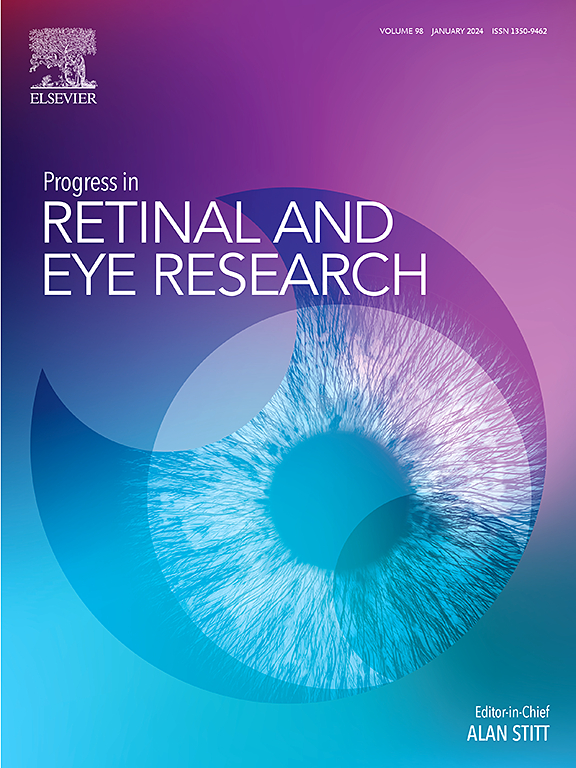AI image generation technology in ophthalmology: Use, misuse and future applications
IF 14.7
1区 医学
Q1 OPHTHALMOLOGY
引用次数: 0
Abstract
Background
AI-powered image generation technology holds the potential to reshape medical practice, yet it remains an unfamiliar technology for both medical researchers and clinicians alike. Given the adoption of this technology relies on clinician understanding and acceptance, we sought to demystify its use in ophthalmology. To this end, we present a literature review on image generation technology in ophthalmology, examining both its theoretical applications and future role in clinical practice.
Methods
First, we consider the key model designs used for image synthesis, including generative adversarial networks, autoencoders, and diffusion models. We then perform a survey of the literature for image generation technology in ophthalmology prior to September 2024, presenting both the type of model used and its clinical application. Finally, we discuss the limitations of this technology, the risks of its misuse and the future directions of research in this field.
Results
Applications of this technology include improving AI diagnostic models, inter-modality image transformation, more accurate treatment and disease prognostication, image denoising, and individualised education. Key barriers to its adoption include bias in generative models, risks to patient data security, computational and logistical barriers to development, challenges with model explainability, inconsistent use of validation metrics between studies and misuse of synthetic images. Looking forward, researchers are placing a further emphasis on clinically grounded metrics, the development of image generation foundation models and the implementation of methods to ensure data provenance.
Conclusion
Compared to other medical applications of AI, image generation is still in its infancy. Yet, it holds the potential to revolutionise ophthalmology across research, education and clinical practice. This review aims to guide ophthalmic researchers wanting to leverage this technology, while also providing an insight for clinicians on how it may change ophthalmic practice in the future.
人工智能图像生成技术在眼科:使用、误用和未来应用。
背景:人工智能驱动的图像生成技术有可能极大地重塑眼科临床实践。这项技术的采用有赖于临床医生的接受程度,但对于眼科研究人员和临床医生来说,这是一项陌生的技术。在这项工作中,我们对图像生成技术在眼科中的应用进行了文献综述,讨论了其理论应用和未来作用:首先,我们探讨了用于图像合成的主要模型设计,包括生成式对抗网络、自动编码器和扩散模型。然后,我们对 2024 年 9 月之前眼科图像生成技术的文献进行了调查,收集了每项研究使用的模型类型及其临床应用。最后,我们讨论了这项技术的局限性、滥用的风险以及该领域未来的研究方向:结果:该技术的应用包括提高诊断模型性能、跨模态图像转换、治疗和疾病预后、图像去噪和教育。将这一技术融入眼科临床实践的主要挑战包括生成模型的偏差、患者数据安全风险、模型开发的计算和后勤障碍、模型可解释性的挑战、不同研究之间使用的验证指标不一致以及合成图像的滥用。展望未来,研究人员将进一步强调临床基础指标、图像生成基础模型的开发以及确保数据来源的方法的实施:显而易见,图像生成技术有可能为眼科领域的许多任务带来益处,但与人工智能的其他医疗应用相比,它仍处于起步阶段。本综述旨在帮助眼科研究人员确定最佳模型和方法,以便更好地利用这项技术。
本文章由计算机程序翻译,如有差异,请以英文原文为准。
求助全文
约1分钟内获得全文
求助全文
来源期刊
CiteScore
34.10
自引率
5.10%
发文量
78
期刊介绍:
Progress in Retinal and Eye Research is a Reviews-only journal. By invitation, leading experts write on basic and clinical aspects of the eye in a style appealing to molecular biologists, neuroscientists and physiologists, as well as to vision researchers and ophthalmologists.
The journal covers all aspects of eye research, including topics pertaining to the retina and pigment epithelial layer, cornea, tears, lacrimal glands, aqueous humour, iris, ciliary body, trabeculum, lens, vitreous humour and diseases such as dry-eye, inflammation, keratoconus, corneal dystrophy, glaucoma and cataract.

 求助内容:
求助内容: 应助结果提醒方式:
应助结果提醒方式:


